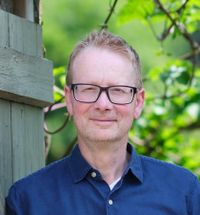'Try them with pecorino and a cold glass of dryish white wine and feel smug': How to grow your own almonds
Associated with warmer climes than these, you can cheat geography and bask in the sense of glorious impossibility if you choose the right varieties.


There is a peculiar magic in growing almonds. However often you see their soul-lifting, frost-risking flush of white blossom and however often you collect a basket of home-grown almonds, it’s hard to lose the sense of glorious impossibility, that somehow you’ve cheated geography and climate.
California in the US — home to most of the world’s almonds — is a fair climatic cry from the UK, but, with the right varieties, care in location and a little help at flowering time, basketfuls of nuts (or drupes, strictly speaking) are very possible. Let me not pull the wool over anyone’s eyes; almonds are marginal, nuts are unlikely to be a guaranteed yearly harvest, but, when they come, the pleasure — and the flavour — is hard to beat.
A UK summer, even this patchy one, is plenty long enough to ripen almonds; the pinch point is in spring. The flowers are susceptible to late frosts, so choosing late-flowering varieties is crucial, as is lining up all the variables in their favour. A well-drained, moisture-retentive soil of reasonably neutral pH, avoidance of frost pockets, good shelter from the strongest winds and a sunny site are all important. Almonds are hardy down to about -15°C, so bear that in mind with location and be prepared to wrap young trees in fleece during colder spells.
A hive or two will really help: the spring weeks when flowers appear often coincide with few pollinators and a population of bees emerging from a sleepy winter can make all the difference to your chances. If keeping bees is beyond circumstance or preference, you could employ a soft paintbrush to transfer pollen between flowers. Almonds are self-fertile, so you will get almonds with only one tree, but each will produce a larger harvest if you grow two or more varieties together.
‘Mandaline’ and ‘Ferragnes’ are two newer varieties that flower a little later than most, giving the blooms a better chance of dodging frosts. Their overlapping flowering periods make them pollination friendly, too. I have also grown two early-producing peach hybrids — ‘Ingrid’ and ‘Robijn’ — that, despite the hybridisation, look and taste like familiar almonds.
They also have greater hardiness than most, good for marginal areas in the UK. Peaches and almonds can cross-pollinate, resulting in bitter nuts that should not be eaten, so avoid growing them together. Spacing varies with soil, variety and rootstock — check with your supplier — but 6m (20ft) or so between trees is usual.
As with peaches, leaf curl can be a nuisance. Some varieties, including the peach hybrids, have good resistance, but if you can cover your tree from the worst of the spring rains that bring the disease, all the better. A friend uses clingfilm to create an umbrella of sorts around the top half, keeping most of the rain off for a few weeks, but still allowing pollinators in.
Exquisite houses, the beauty of Nature, and how to get the most from your life, straight to your inbox.
Maintenance is minimal: prune as little as you can, only in summer (winter pruning can encourage fungal diseases and canker) cutting out dead, diseased or crossing branches. Almonds usually reach their mature size early in the season, when they resemble small peaches. As harvesting time approaches, their green fleshy outer splits, but it can still be more than a month until the perfect moment to pick.
If you can, resist the urge to harvest them until the stalk between tree and almond starts to break down. A sheet is a good way to catch the nuts when you shake the tree. Almonds that develop towards the centre of the tree often mature a little later, so leave them to ripen and return every few days to check until the time is right.
Picking them at their perfect moment means your own almonds are likely to be the finest you’ve eaten, but there is a further bonus to growing your own: green almonds. As with walnuts, the drupes can be picked early, before the shell forms. The ideal time depends on variety, but, when the time’s right, they’ll be soft and yield to a squeeze.
A delicacy, especially in France, green almonds’ flavour is like the best fresh peas, with the merest hint of almond. You can eat them whole if picked early or, if left later, split and remove the developing shell to reveal what looks like an ivory-coloured broad bean. Try them with pecorino and a cold glass of dryish white wine and feel smug that you grew them yourself.

Credit: PhotoAlto/Laurence Mouton via Getty Images
Parasites of pleasure: the plants that live on plants and what to do with them
You might see it as an opportunity to grab a quick kiss at Christmas, but mistletoe is a parasite like
Mark is lucky enough to spend most of his time eating, growing, writing and talking about food. He has written fourteen award-winning books, including A Year at Otter Farm and A Taste of the Unexpected (both won Food Book of the Year, and Garden Book of the Year). Known for growing everything from Szechuan pepper to pecans to Asian pears, Mark's refreshing approach to growing and eating has done much to inspire a new generation to grow some of what they eat. He was involved in the early days of River Cottage, appearing in the TV series, and writing four River Cottage books. Mark writes to a global audience on his best-selling Substack: Mark Diacono’s Abundance.
